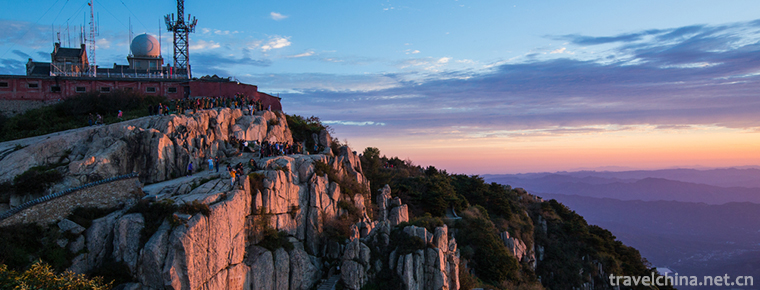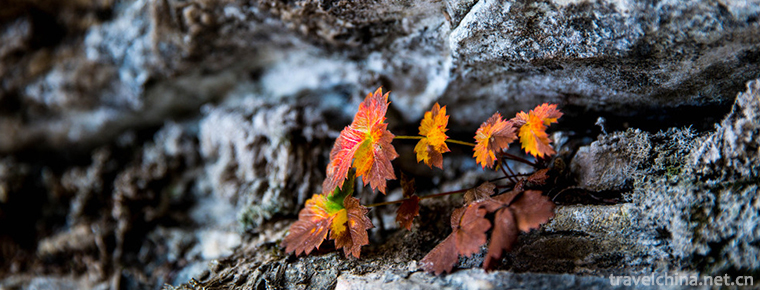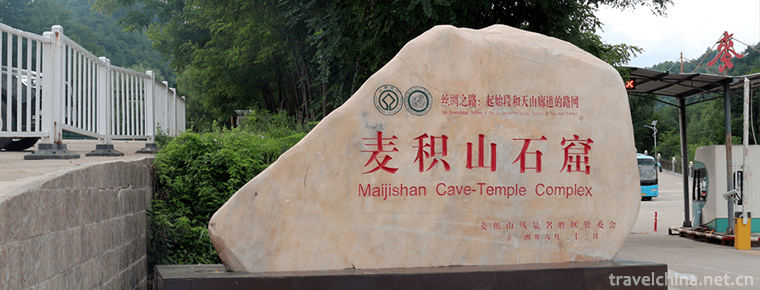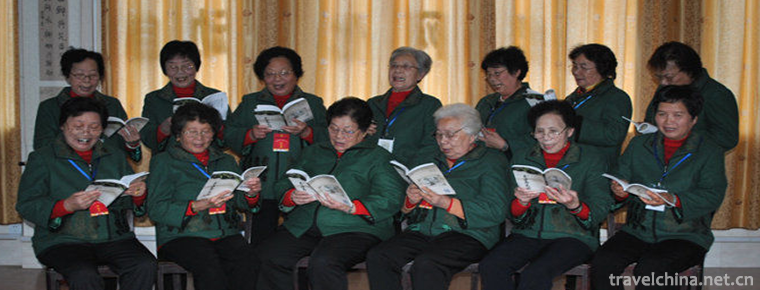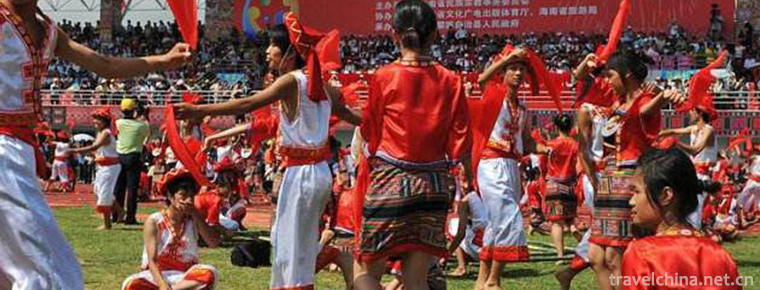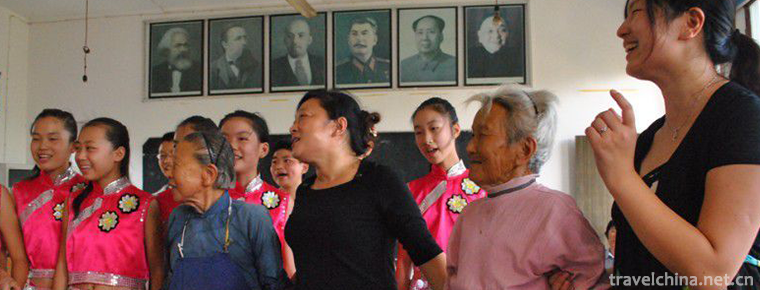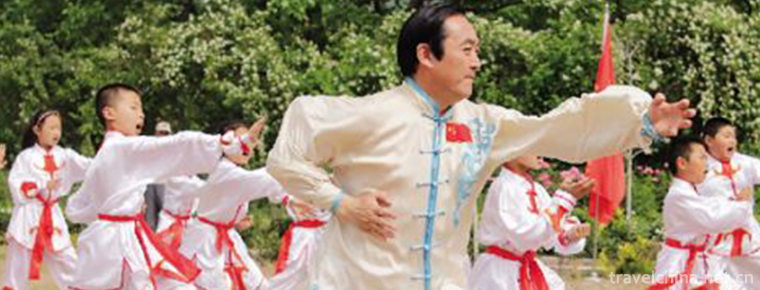Historic Architectural Complex in Heaven and Earth
Historic Architectural Complex in Heaven and Earth
Historic buildings in Tiandi, World Cultural Heritage, National Key Cultural Relics Protection Units and National AAAAA Tourist Scenic Spots are located in the hinterland and surrounding Songshan Mountain of Dengfeng City, Zhengzhou City, Henan Province. They contain 8 World Cultural Heritages, 11 National Key Cultural Relics Protection Units, 16 National Key Cultural Relics Protection Units, 22 Key Cultural Relics Protection Units in Henan Province, and more than 6700 valuable cultural relics.
Historic buildings in heaven and earth have gone through Zhou Dynasty, Han Dynasty, Cao Wei, Western Jin Dynasty, Northern Wei Dynasty, Sui Dynasty, Tang Dynasty, Five Dynasties, Song Dynasty, Jin Dynasty, Yuan Dynasty, Ming Dynasty, Qing Dynasty and other dynasties. They constitute an ancient and intuitive architectural history of 3,000 years in the Central Plains region. They are the ancient buildings with the longest span, the most types of buildings and the richest cultural connotations in China. The real embodiment of the unique cosmic outlook and aesthetics of our ancestors. With its superb architectural achievements, the historical buildings in heaven and earth represent the creation and model of the ancient architectural system of our country, which embodies the outstanding creativity of human beings and has worldwide value. The temples, queens, temples, towers, platforms and academies based on the concept of "heaven and earth" embody the architectural achievements of various generations in China, such as etiquette, religion, science and technology, and education. It represents the essence of Chinese traditional culture for more than 3000 years. It is the source of Buddhism, Taoism and Confucianism. It is also the place where the three religions can be synthesized. It is the carrier and model of Chinese multi-culture.
On August 1, 2010, the historical buildings (Shaolin Temple (often hospitalized, Chuzu'an, Talin), Sanque (Taishique, Shaoshuque, Qimuque), Zhongyue Temple, Songyue Temple, Huishan Temple, Songyang Academy, Guanxing Tai) in the hinterland of Songshan Mountain and the surrounding heaven and earth were listed as world cultural heritage.
Historical evolution
In the 2nd century B.C., Zhongyue Temple was founded. It was built independently in the basin plain of the "heaven and earth" under the background of the Tai Cham Mountain.
In the 2nd century AD, Sanque was founded in the Eastern Han Dynasty. The ritual architecture group consisting of Taishique and Zhongyue Temple is an excellent example of space treatment of ancient temple buildings. Shaoshique and Qimuque represent a tradition in thousands of years of Chinese history, ancestor worship, with a special architectural form and artistic content.
During the period of Zhengguang in Northern Wei Dynasty (520-525 AD), Songyue Temple Pagoda was founded. The former Emperor Xuanwu left the palace and was later rebuilt into a Buddhist temple.
In the nineteenth year of Taihe in the Northern Wei Dynasty (495 A.D.), Shaolin Temple was often built in hospital. There are more than 30 Ming and Qing buildings in the temple. From 689 to 1803, 241 ancient pagodas and 2 modern pagodas were built in the pagodas of Shaolin Temple. The primitive ancestor's Temple of Shaolin Temple was built to commemorate the founder of Buddhism's Eastern Zen Buddhism, the South Asian monk Damo. It is one of the countless and complete brickwork of Song Dynasty in China. It is also the first precious demonstration after the promulgation of the building law of Song Dynasty. Shaolin Temple complex (Tallinn, Chuzu'an, often hospitalized) witnessed the spread of Buddhism through the "heaven and earth" to strengthen and consolidate its influence, and thus formed China's largest Zen sect.
During the reign of Emperor Xiaowen of the Northern Wei Dynasty (471-499 A.D.), Huishan Temple was built. There were nine existing buildings in the temple during the Yuan, Ming and Qing Dynasties.
Taihe eight years of the Northern Wei Dynasty (AD 484) built Songyang Academy in the predecessor of Songyang Temple. It was one of the four academies in the Northern Song Dynasty, and was the origin of Neo-Confucianism of Cheng and Zhu. Songyang Academy has 26 existing buildings of the Qing Dynasty.
In 2009, the 33rd World Heritage Committee meeting held in Seville, Spain, decided to suspend the project of Songshan Historical Complex declared by China. Songshan needs additional materials, which will be considered at the 34th Congress held in Brasilia in 2010.
On August 1, 2010, the historical buildings (Shaolin Temple (often hospitalized, Chuzu'an, Talin), Sanque (Taishique, Shaoshuque, Qimuque), Zhongyue Temple, Songyue Temple, Huishan Temple, Songyang Academy, Guanxing Tai) in the hinterland of Songshan Mountain and the surrounding heaven and earth were listed as world cultural heritage.
Application process
An application for a legacy
The 33rd World Heritage Committee meeting held in Seville, Spain, has decided to suspend China's declared Songshan historical complex project. Songshan needs additional materials, which will be considered at the 34th Congress held in Brasilia in 2010.
Following the inclusion of the Wutai Mountain project declared by China as a cultural landscape in the World Heritage List, the World Heritage Committee held a general meeting on the afternoon of June 26, 2009 to consider Songshan, China's second declared project.
After a heated debate by the Committee, the General Assembly decided to continue its deliberations as a candidate landscape site in 2010 after China supplemented the declaration text of Songshan Mountain.
According to the relevant personnel of the State Administration of Cultural Relics, the results of the declaration of World Heritage Sites can be divided into four categories: direct selection into the World Heritage List, retrial of supplementary materials, or retrial and non-selection. Because of the cultural differences between the East and the West, some Western scholars believe that the cultural value of Songshan should be "sacred mountain worship" rather than "heaven and earth" as elaborated by the Chinese side. Therefore, in the review report provided by the International Council of Monuments and Relics, the suggestion of retrial of Songshan was made. In addition, owing to the failure of the natural heritage part of the Wutaishan project under consideration at this meeting, the original declaration of mixed natural and cultural heritage was adjusted to cultural landscape, which made China face the difficult situation of declaring two similar types of cultural heritage projects at the same time, and the timing was quite unfavorable.
Tong Mingkang, head of the delegation and deputy director of the State Administration of Cultural Relics, said that all relevant departments, including the State Administration of Cultural Relics, should continue to improve the declaration text of Songshan historical complex. Songshan historical complex will continue to work hard.
Successful application
The 34th World Heritage Conference announced on August 1, 2010 in Brasilia, the capital of Brazil, that the historical buildings from Dengfeng Heaven and Earth in Henan Province of China have officially become world cultural heritage. So far, 39 world heritage sites and 26 world cultural heritage sites have been built in China.
Chen Ailan, director of Henan Cultural Relics Bureau, who is attending the World Heritage Conference in Brasilia, Brazil, said by telephone: "We have waited for a long time for the joy, but this joy is not easy. The world has given us more and more responsibilities. Success in applying for the heritage is not the end, but the beginning."
Shi Yongxin, abbot of Shaolin Temple, was also very excited about the news. He said that it is our honor and pride to touch the world cultural heritage every day when monks live and live in monasteries. At the same time, we should shoulder greater responsibilities.
"It has a long history, complete categories, authenticity and uniqueness, which is the greatest advantage of applying for Heritage in heaven and earth, and also fully conforms to the World Heritage Convention standards on the value of the World Cultural Heritage." Zhang Jiatai, Dean of the Institute of Ancient Architecture and Landscape Architecture of Henan University, said.
Among the historical buildings listed in the world cultural heritage, Shaoshuqu and Qimuqu, which were founded in the Eastern Han Dynasty, are the oldest national model of sacrificial ritual architecture in China; Zhongyue Temple and Taishiqu are the most comprehensive representatives of the ancient ritual architecture pattern in China; Zhou Gong Observatory and Star Observatory are the oldest existing observatories in China; Songyang Academy is the earliest dissemination in China. Confucian Neo-Confucianism, the academies offering sacrifices to Confucian sages and holding examinations are the carriers of the disappeared Academy culture; Songyue Temple Pagoda, Shaolin Temple and Huishan Temple are monuments to the development of Buddhism in China in different periods, and they have influenced the form of religious buildings in a wide range for more than a thousand years.
In the early Chinese view of the universe, China was in the center of heaven and earth, and the center of heaven and earth was in Dengfeng area of Zhengzhou in the Central Plains of China. Therefore, it became the place where the early Chinese dynasty built its capital, the center of the origin of Chinese civilization and the center of cultural gathering. Ancient Chinese ritual, astronomy, Confucianism, Buddhism, Taoism and other cultural schools have come here to worship the Holy mountains, worship mountain gods, preach scriptures, and establish a core base.
"Different cultural beliefs are called together by the idea of"heaven and earth", leaving behind rich wealth. The representative works of architectural types such as etiquette, religion, science and technology and education of past dynasties are gathered here and retained truthfully, constituting an intuitive and visual architectural history of the Central Plains region for 3000 years, which is the real embodiment of the unique cosmic outlook and aesthetics of Chinese ancestors." Yang Huancheng, a famous expert in ancient architecture, said.
Entrusted by the World Heritage Committee, Juliet Ramsey, an Australian cultural heritage expert, assesses and accepts the historical buildings in Tiandi. "After three days'inspection, I realized the word"Zhong", she said,"The inscription of Shaolin Temple, Guanxing Tai, Zhongyue Temple and Songyang Academy always appears on the tablets, which fully demonstrates a nation's worship and recognition of "heaven and earth" in the humanities.
Since the commencement of the Heritage Application work, according to the general principle of "not changing the original state of cultural relics, their environment and landforms", Henan Province and Dengfeng City have carried out renovation and environmental renovation of 11 ancient buildings in eight places. More than 1000 ancient and famous trees in the building complex have also entered the protection list, and more than 300 sick ancient trees have been carefully diagnosed and treated by experts.
Relatively dull and lengthy preparatory process for the application has also become lively because of the participation of the whole society and the citizens. For example, in the construction of archives and materials, the scene of the citizens providing and donating books and documents enthusiastically makes Gong Songtao, deputy director of the Cultural Relics Administration of Dengfeng City, who has been involved in the application work, recall and sigh: "I did not expect that the citizens will be so active and peaceful." With this cooperation, our archives have been enriched a lot.
Since the signing of the Convention on the Protection of World Cultural and Natural Heritage in 1985, China has made active efforts in declaring and protecting cultural heritage, not only improving the level of management and protection of heritage sites, but also expanding China's influence in the international community. China has 39 landscapes on the World Heritage List. Among them, there are 28 cultural heritages, 7 natural heritages and 4 mixed cultural and natural heritages.
Historic buildings in Tiandizhong participated in the second review of the World Heritage Convention. This project was recognized by the World Heritage Conference as "Re-discussion of Supplementary Materials" project. In the past year, the relevant departments at the national and local levels have strengthened communication with international organizations and supplemented the declaration materials in accordance with the opinions of the General Assembly. In March, the International Council of Monuments and Sites, which is responsible for providing professional advice to the General Assembly, recommended the inclusion of "heaven and earth" in the list.
Chen Ailan said that with the successful application, Henan will conscientiously do a good job in heritage protection according to the requirements of the World Heritage Organization, so that the historical buildings in Dengfeng Heaven and Earth can prolong their life and protect the precious cultural heritage belonging to all mankind on the basis of maintaining their original appearance. At the same time, efforts will be made to complete the display of 8 and 11 heritage sites in blocks by the end of 2010, so that they can be presented to the public in a multi-angle and all-round way.
Heritage Description
The complex lasts for a long time and has many types. It exhibits ancient architectural works of different cultural values, such as Buddhism, Taoism and Confucianism. Together with abundant relics such as ancient inscriptions and murals, it constitutes a unique traditional cultural landscape in China and even in the world. It represents the ancient civilization tradition of China, highlights the achievements of science, Technology and art, and reflects its Oriental role. The core role of the birthplace of civilization in the origin and integration of civilization is also a great wealth for the continuation and development of contemporary culture. Its outstanding historical value, scientific value and artistic value should be cherished and protected by all mankind.
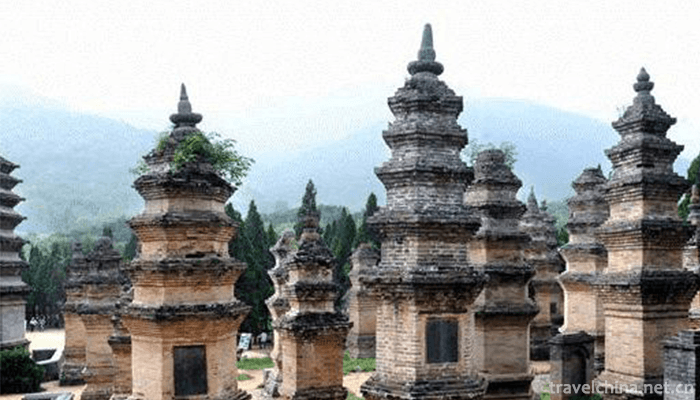
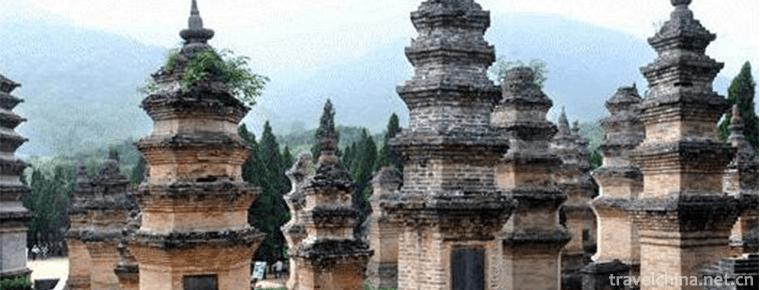
Historic Architectural Complex in Heaven and Earth
-
Mount Tai
Mount Tai, also known as Daishan, Daizhong, Daiyue, Dongyue, Taiyue, is located in the central part of Shandong Province, belonging to Tai'an City, stretching between Tai'an, Jinan, Zibo, with a total
Views: 266 Time 2018-10-28 -
Baishishan Scenic Area Baoding City Hebei Province
Baishishan Scenic Area, also known as Baishishan National Geological Park, is called "Xiaohuangshan" because its scenery resembles the Huangshan Mountain in Anhui Province.
Views: 296 Time 2018-11-24 -
Maiji Mountain Scenic Spot
Maiji Mountain, located in Maiji District of Tianshui City, Gansu Province, is a lone peak of Xiaolongshan, 142 meters high, named for its resemblance to wheat stacks
Views: 157 Time 2018-12-12 -
Song Album
"Dongshan Song Book" was introduced from Chaozhou, Guangdong Province, in the Ming Dynasty. Its tunes were constantly changing in the singing of folk singers and gradually assimilated
Views: 180 Time 2019-04-30 -
March 3rd Festival of Li Nationality
The third day of March (the third day of the third month of the third lunar month) is the grandest traditional folk festival of the Li people in Hainan Province. It is also a beautiful day for the you
Views: 215 Time 2019-05-12 -
Legend of Liu Bowen
Liu Bowen's legend is based on the traditional folk oral literature of Liu Ji, a historical figure, spread throughout the whole country in eastern Zhejiang, with Qingtian, Wencheng and other southern
Views: 433 Time 2019-05-13 -
Mashan folk songs
Mashan Folk Song is a traditional folk song form which is popular in the area of Mashan Town, Jingzhou District, Jingzhou City, Hubei Province. One of China's national intangible cultural heritage lis
Views: 348 Time 2019-05-15 -
Xujiaquan
Xujiaquan, a traditional boxing method, originated in Tongji Village, Xintai City, Shandong Province. Xujiaquan originated in Yongzheng Period of Qing Dynasty and was created by Xu Shengcai, Gaozu of
Views: 192 Time 2019-07-09 -
Southwest Jiaotong University
Southwest Jiaotong University is a national key university directly under the Ministry of Education. The first batch of national "double first-class", "211 project", "characte
Views: 187 Time 2019-08-31 -
Beihang University
Beijing University of Aeronautics and Astronautics is the first Institute of higher learning in Aeronautics and Astronautics founded in New China. It is a university with sacred mission and grand visi
Views: 198 Time 2019-09-06 -
China University of Labor Relations
China Institute of Industrial Relations (China University of Labor Relations) All China Federation of trade unions Ordinary Institutions of higher learning It is jointly built by the all China Federat
Views: 180 Time 2019-12-20 -
Jiufeng Mountain Scenic Area
Jiufeng Mountain is located in Dabao Township in the northwest of Pengzhou. It is about 97 kilometers away from Chengdu, with an altitude of more than 3315 meters. It is the crown of Pengzhou mountains, a sacred and mysterious area
Views: 257 Time 2020-11-05
